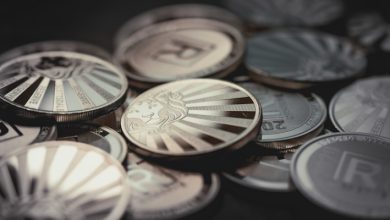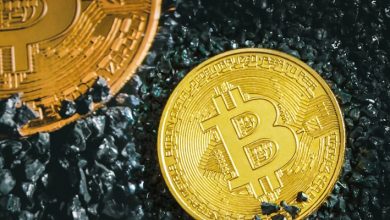The Role of Tokenization in Unlocking New Asset Classes

- The Evolution of Asset Classes in the Digital Age
- Understanding the Concept of Tokenization
- Exploring the Benefits of Tokenizing Assets
- How Tokenization is Democratizing Investment Opportunities
- The Future of Asset Management through Tokenization
- Challenges and Opportunities in the Tokenization of Assets
The Evolution of Asset Classes in the Digital Age
In the digital age, traditional asset classes such as real estate, stocks, and bonds are evolving to adapt to the changing landscape of finance. The emergence of tokenization has played a crucial role in unlocking new opportunities for investors to diversify their portfolios and access previously inaccessible markets.
Tokenization allows assets to be represented digitally on a blockchain, enabling fractional ownership and increased liquidity. This technology has paved the way for the creation of new asset classes that were once difficult to trade or transfer. As a result, investors now have the opportunity to invest in a wider range of assets, including fine art, collectibles, and even intellectual property rights.
By leveraging blockchain technology, tokenization has democratized access to investments that were previously reserved for institutional investors or high-net-worth individuals. This has democratized access to investments that were previously reserved for institutional investors or high-net-worth individuals. Additionally, tokenization has the potential to reduce barriers to entry and streamline the process of buying and selling assets.
Overall, the evolution of asset classes in the digital age has opened up a world of possibilities for investors looking to diversify their portfolios and explore new investment opportunities. Tokenization has played a key role in this transformation, offering a more efficient and accessible way to trade assets and unlock value in previously untapped markets. As technology continues to advance, the potential for new asset classes to emerge remains promising, paving the way for a more inclusive and diverse financial ecosystem.
Understanding the Concept of Tokenization
Tokenization is a concept that has been gaining traction in the world of finance and investment. Essentially, tokenization involves converting real-world assets into digital tokens on a blockchain. These tokens represent ownership or a stake in the underlying asset, whether it be real estate, art, or even commodities.
One of the key benefits of tokenization is its ability to fractionalize assets, allowing investors to buy and sell smaller portions of an asset. This opens up investment opportunities to a wider range of individuals who may not have the capital to invest in a full asset. Additionally, tokenization can also increase liquidity in traditionally illiquid markets, as digital tokens can be traded more easily and quickly than physical assets.
Furthermore, tokenization brings transparency to asset ownership and transactions. Each token is unique and can be traced back to its original asset, providing a clear record of ownership. This can help reduce fraud and improve trust among investors in the market.
Overall, understanding the concept of tokenization is crucial for unlocking new asset classes and revolutionizing the way we invest. By digitizing assets and making them more accessible and transparent, tokenization has the potential to democratize investing and open up new opportunities for both investors and asset owners alike.
Exploring the Benefits of Tokenizing Assets
Tokenizing assets offers a wide range of benefits that can revolutionize the way we think about investing and trading. By converting physical or digital assets into tokens on a blockchain, individuals can gain access to new asset classes and investment opportunities that were previously unavailable.
One of the main advantages of tokenization is increased liquidity. Tokens can be traded on digital asset exchanges 24/7, allowing investors to buy and sell their assets at any time. This can result in a more efficient market, with lower transaction costs and faster settlement times.
Additionally, tokenization can reduce barriers to entry for investors. Fractional ownership of assets becomes possible through tokenization, enabling individuals to invest in high-value assets such as real estate or fine art without having to buy an entire property or artwork. This opens up investment opportunities to a wider range of people, democratizing access to traditionally exclusive asset classes.
Furthermore, tokenization can improve transparency and security in asset transactions. The use of blockchain technology provides a secure and immutable record of ownership, reducing the risk of fraud or manipulation. Smart contracts can automate the transfer of assets, ensuring that transactions are executed exactly as agreed upon.
Overall, tokenizing assets has the potential to unlock new opportunities for investors and traders, creating a more inclusive and efficient financial ecosystem. As this technology continues to evolve, we can expect to see even more innovation in the way assets are bought, sold, and traded in the future.
How Tokenization is Democratizing Investment Opportunities
Tokenization is revolutionizing the way investment opportunities are accessed and democratizing the financial landscape. By breaking down traditional barriers to entry, tokenization is opening up new asset classes to a wider range of investors, allowing them to diversify their portfolios and participate in markets that were previously out of reach.
Through tokenization, assets such as real estate, fine art, and even intellectual property can be divided into digital tokens, which can then be bought, sold, and traded on blockchain platforms. This fractional ownership model allows investors to access high-value assets with smaller amounts of capital, providing them with the opportunity to benefit from potential returns that were once reserved for a select few.
Furthermore, tokenization enables greater liquidity in traditionally illiquid markets, as tokens can be easily traded 24/7 on digital exchanges. This increased liquidity not only benefits investors by allowing them to exit investments more easily but also provides issuers with access to a larger pool of potential investors, ultimately driving greater efficiency in the market.
The Future of Asset Management through Tokenization
Tokenization is paving the way for a revolution in asset management, offering new opportunities for investors to access a diverse range of asset classes. By digitizing real-world assets and representing them as tokens on a blockchain, tokenization is increasing liquidity, lowering barriers to entry, and enhancing transparency in the asset management industry.
One of the key advantages of tokenization is the fractional ownership it enables. Investors can now own a fraction of high-value assets such as real estate, art, or even rare collectibles. This fractional ownership opens up investment opportunities that were previously inaccessible to the average investor, democratizing the asset management space.
Furthermore, tokenization allows for increased efficiency in asset management processes. Smart contracts embedded in tokens can automate various aspects of asset management, such as dividend distributions, voting rights, and asset transfers. This automation reduces the need for intermediaries, streamlines processes, and ultimately lowers costs for investors.
Another benefit of tokenization is the increased transparency it brings to asset management. By recording asset ownership and transactions on a public blockchain, investors can verify the authenticity of assets and track their investment performance in real-time. This transparency builds trust among investors and reduces the risk of fraud in the asset management industry.
In conclusion, the future of asset management through tokenization is bright, offering investors exciting new opportunities to diversify their portfolios, access previously unavailable asset classes, and benefit from increased efficiency and transparency. As tokenization continues to evolve, it is poised to revolutionize the way we think about and engage with traditional assets.
Challenges and Opportunities in the Tokenization of Assets
Tokenization of assets presents both challenges and opportunities for investors looking to diversify their portfolios. One of the main challenges is the regulatory environment, which can vary significantly from one jurisdiction to another. This can create uncertainty for investors and make it difficult to navigate the legal landscape. Additionally, there are concerns about security and fraud in the tokenization process, as assets are represented digitally and can be vulnerable to cyber attacks.
On the other hand, there are several opportunities that come with the tokenization of assets. One of the key advantages is increased liquidity, as tokenized assets can be traded on secondary markets more easily than traditional assets. This can open up new investment opportunities for a wider range of investors, including retail investors who may not have had access to certain asset classes before. Additionally, tokenization can reduce the barriers to entry for investors, making it easier for them to participate in previously inaccessible markets.
Overall, the tokenization of assets has the potential to revolutionize the way we think about investing and asset ownership. By overcoming the challenges and leveraging the opportunities presented by tokenization, investors can unlock new asset classes and diversify their portfolios in ways that were not possible before. As the technology continues to evolve and regulators catch up, we can expect to see even more innovation in this space in the years to come.






